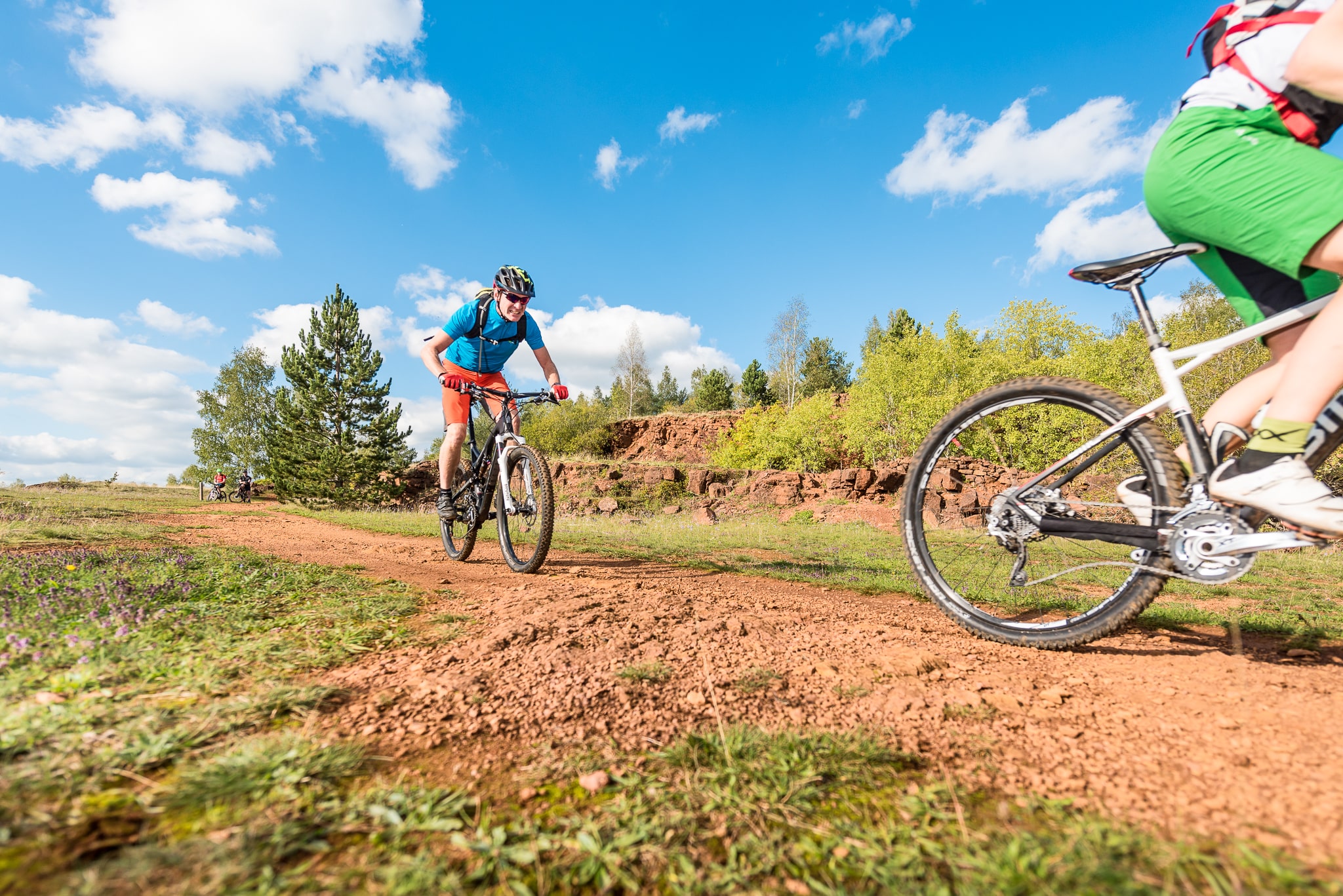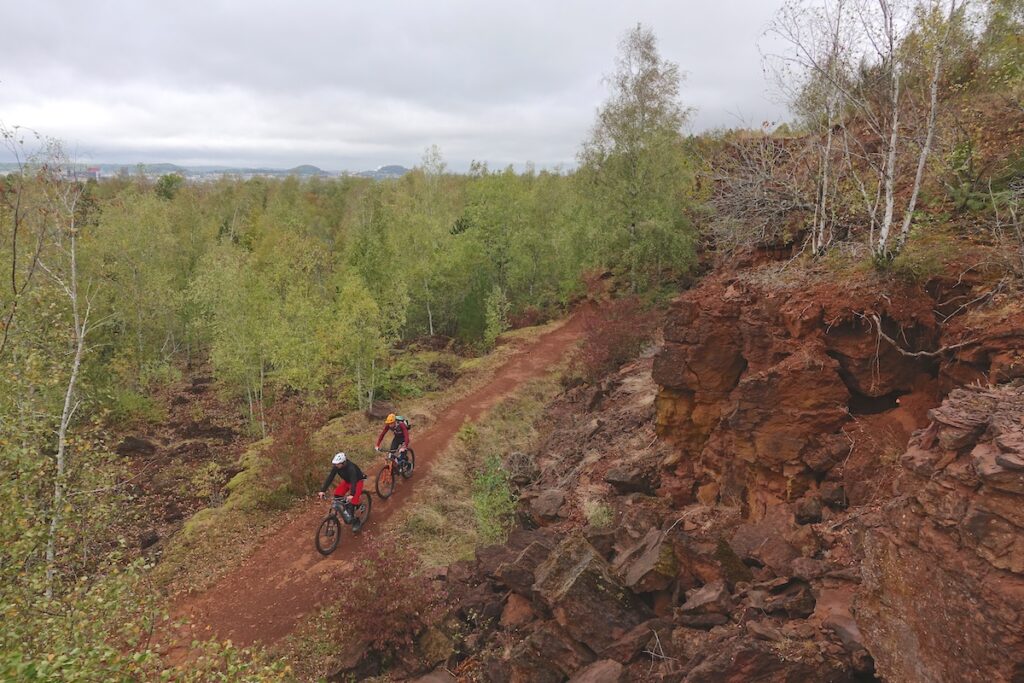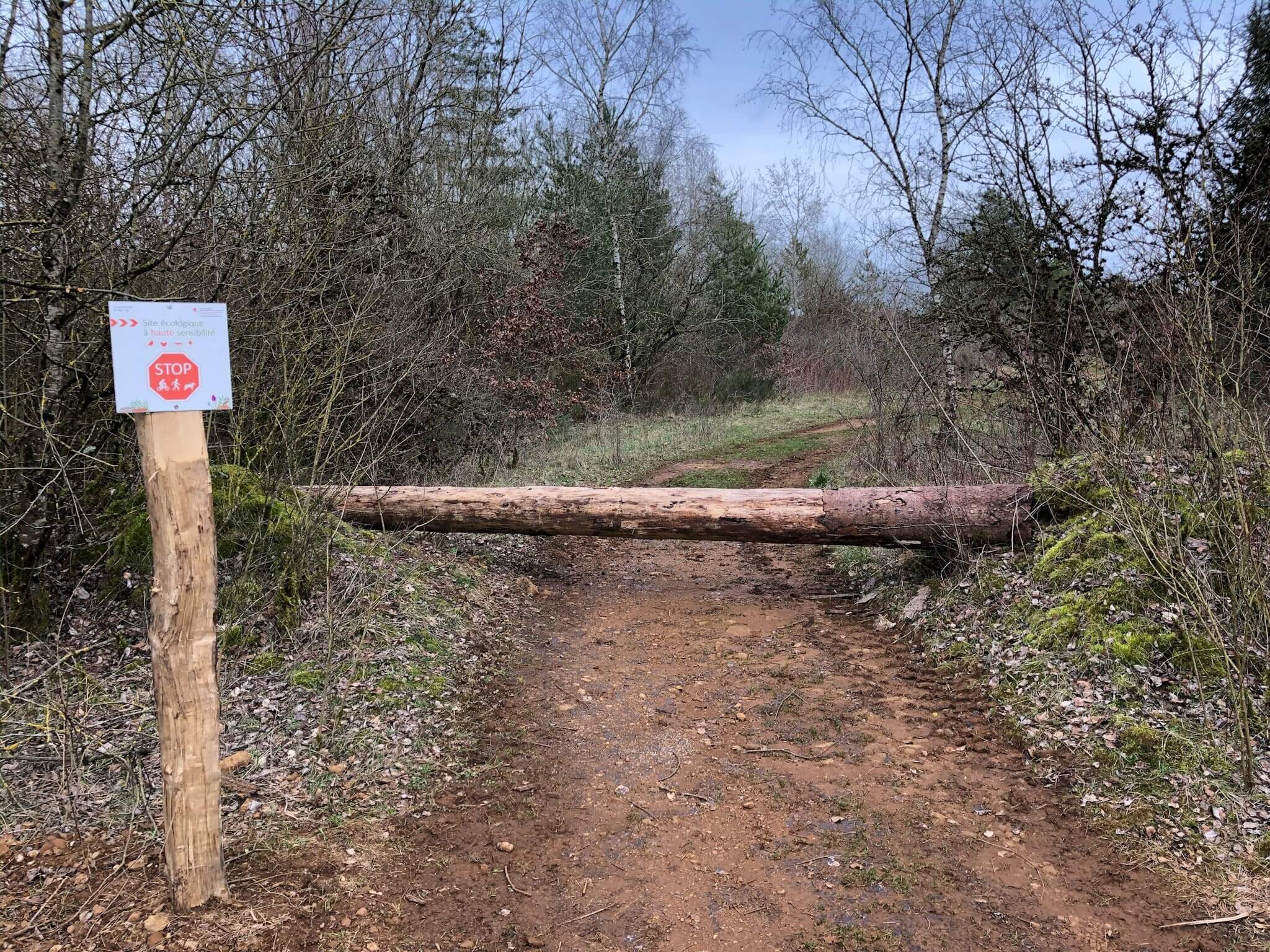Case Study
Designing specific trails to reduce the impact of mountain biking on habitats and wildlife in the Minett region of Luxembourg
Contact name
Jan HERR
Institution name
Administration de la nature et des forêts
Region & country
Minett Region, Luxembourg
Summary
Several former open-cast mining sites (abandoned in the late 70’s) in the Minett Region of Luxembourg are now fully protected (6 nature reserves / 3 Natura 2000 sites / 1 all-encompassing UNESCO Man and Biosphere site). Mountain biking posed a threat to the conservation of protected habitats and species therein. In order to maintain undisturbed zones in one of these sites, unofficial trails were dismantled. A backlash from the mountain bike community led to the designation of two challenging MTB-trails, avoiding the ecologically most sensitive areas. The approach was extended to the other former mining sites in the region.

Redrock Mountainbike trails
Visit Minett

Redrock Mountainbike trails
Claude ASSEL

Exclusion Zone
Jan Herr
Background of the project
The former mining sites offer an attractive /challenging landscape for mountain biking (MTB). This recreational activity developed rapidly in the 90’s until little habitat remained unimpacted by trails. This caused degradation of dry grasslands and plants (orchids) as well as disturbance or death of wildlife (woodlark /reptiles). Back then some sites were already protected, others only got that status later. MTBing outside of official trails is forbidden in the Protected Areas.
There was a need for exclusion zones within these sites that remain unimpacted by MTBing and can offer optimal habitat for the species that are targeted in these Protected Areas. A strategy was needed to funnel mountain bike traffic away from sensitive areas onto trails that remain attractive to mountain bikers but pose little threat to target species and habitats.
Solution and actions taken
A network of challenging mountain bike trails was designed across the different Protected Areas that allows mountain bikers to fully appreciate the typical landscape, while avoiding the ecologically most sensitive areas. All in all 154 km of trails with different degrees of difficulty were designed and signposted.
– Several unofficial trails were dismantled and signposted as exclusion zones.
– An agent from the Nature and Forest Agency, himself an avid mountain biker, designed trails that incorporated nature conservation and mountain biking criteria.
– All trails were signposted on the ground and published online on the public geoportal from the Luxembourgish government.
– The trails were advertised by the regional tourist office in order for people to get to know and use them.
Other institutions or parties involved
The project was done in collaboration between the Nature and Forest Agency and the Regional Tourist Office.
Results
The trails are well known, accepted and highly used across the MTB-community. They are mostly effective to guide non-locals across the sites. Dismantled trails and exclusion zones are respected. Unfortunately, there is still a lot of traffic outside of these official trails. New trails keep appearing. The overall numbers of mountain bikers keeps growing. Another effort will be undertaken to actively designate further exclusion zones, especially for ground-nesting birds (e.g. woodlark).
Challenges
– Initial trail dismantling was met by a strong backlash from the mountain biking community.
– Vandalism of signposts designating the exclusion zones.
– Exclusion zones were not respected.
– Old habits die hard. Mostly locals kept using trails that they had been using in the past.
Lessons learned
– Need for compromise for nature conservation and recreation to exist alongside.
– MTB-trails need to be challenging and attractive.
– Designating MTB-trails and advertising them alone is not enough to ensure that other areas stay quiet. Advertisement needs to better convey the message that riding outside the official trails is forbidden.
– Sensitive areas or trails that have to remain quiet need to be physically closed off. Alternative routes
Contact name
Jan HERR
Institution name
Administration de la nature et des forêts
Website(s)
